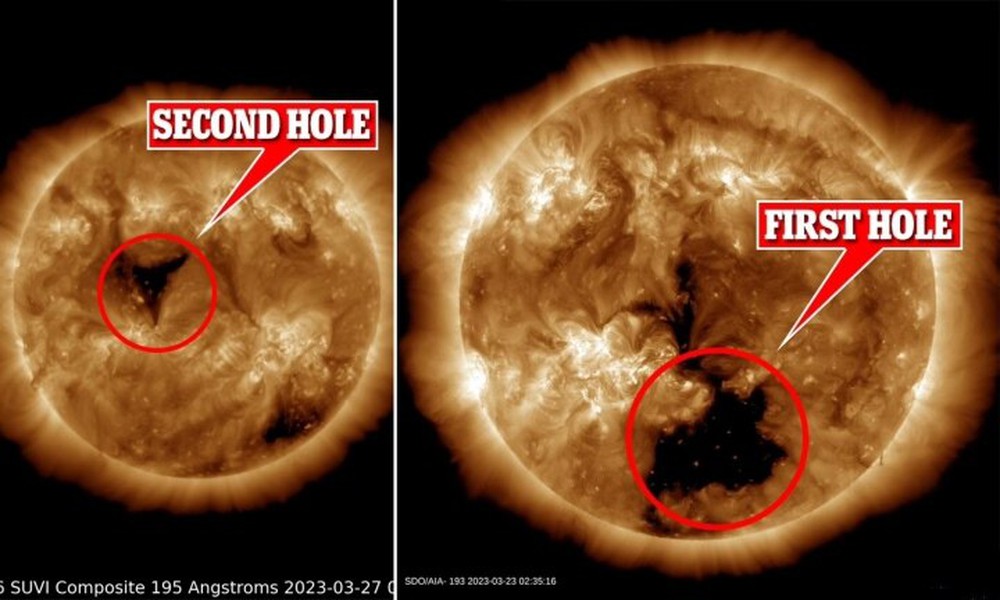If you are a fan of auroras, you might be in for a treat this weekend. A second giant “hole” has appeared on the sun’s surface, and it could send high-speed solar winds toward our planet by Friday or Saturday.

What is a coronal hole?
A coronal hole is a region on the sun where the magnetic field is open to interplanetary space, allowing hot plasma to escape. This plasma forms a stream of charged particles called the solar wind, which travels at speeds of up to 1.8 million mph (800 km/s).
Coronal holes are not uncommon, but they vary in size and location. They are more frequent and persistent during the solar minimum, the period of low activity in the 11-year solar cycle. The sun is currently in a solar minimum phase, which means we can expect more coronal holes in the near future.
How does a coronal hole affect Earth?
When a coronal hole faces Earth, it can send a gust of solar wind toward our planet. Depending on the strength and direction of the magnetic field carried by the solar wind, it can interact with Earth’s own magnetic field and cause geomagnetic storms.
These storms can have various effects on Earth, such as disrupting satellite communications, navigation systems and power grids. They can also enhance the auroras, or northern and southern lights, by making them brighter and more visible at lower latitudes.
The first giant coronal hole that was spotted earlier this month was about 30 times the size of Earth and caused minor geomagnetic storms on March 21 and 22. As this hole begins rotating away from us, a new one has come into view. This one is about 20 Earths across and is located near the sun’s equator.
According to Dr Daniel Verscharen from University College London, who spoke to Insider, we can expect “fast wind from that coronal hole to come to Earth around Friday night into Saturday of this week”. He added that “the shape of this coronal hole is not particularly special. However, its location makes it very interesting”.
How can we observe the effects of a coronal hole?
One of the most spectacular effects of a coronal hole is the aurora borealis (northern lights) and aurora australis (southern lights). These are caused by charged particles from the solar wind colliding with atoms and molecules in Earth’s upper atmosphere, creating colorful displays of light.
The best places to see the auroras are near the poles, where the magnetic field lines converge. However, during geomagnetic storms, the auroras can extend to lower latitudes as well. For example, during the March 21-22 storm, some people reported seeing auroras as far south as Colorado and Nebraska in the US.
To increase your chances of seeing an aurora, you need clear skies, low light pollution and a good view of the northern or southern horizon. You can also check online forecasts and alerts from websites such as SpaceWeather.com or AuroraWatch UK.
However, even if you don’t see an aurora, you can still appreciate the fact that a giant “hole” on the sun is sending a stream of particles toward our planet at incredible speeds. That’s something to marvel at!








